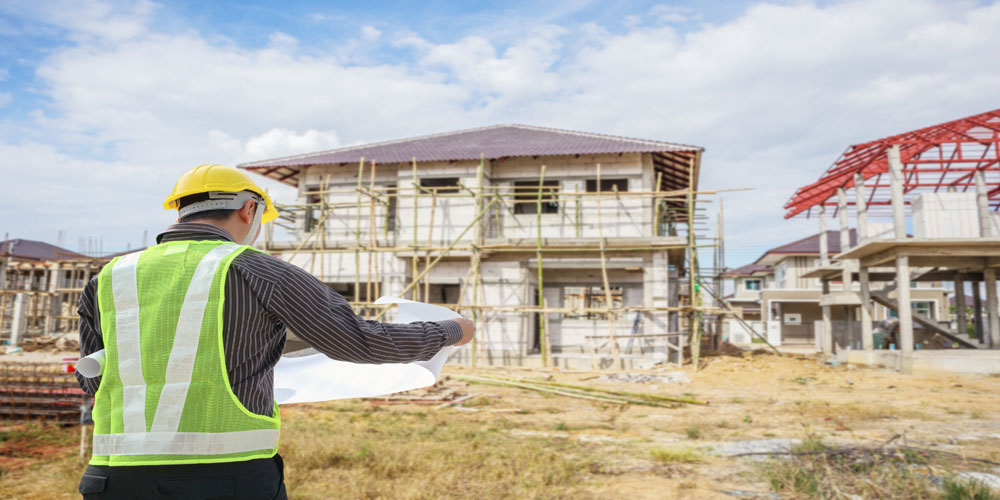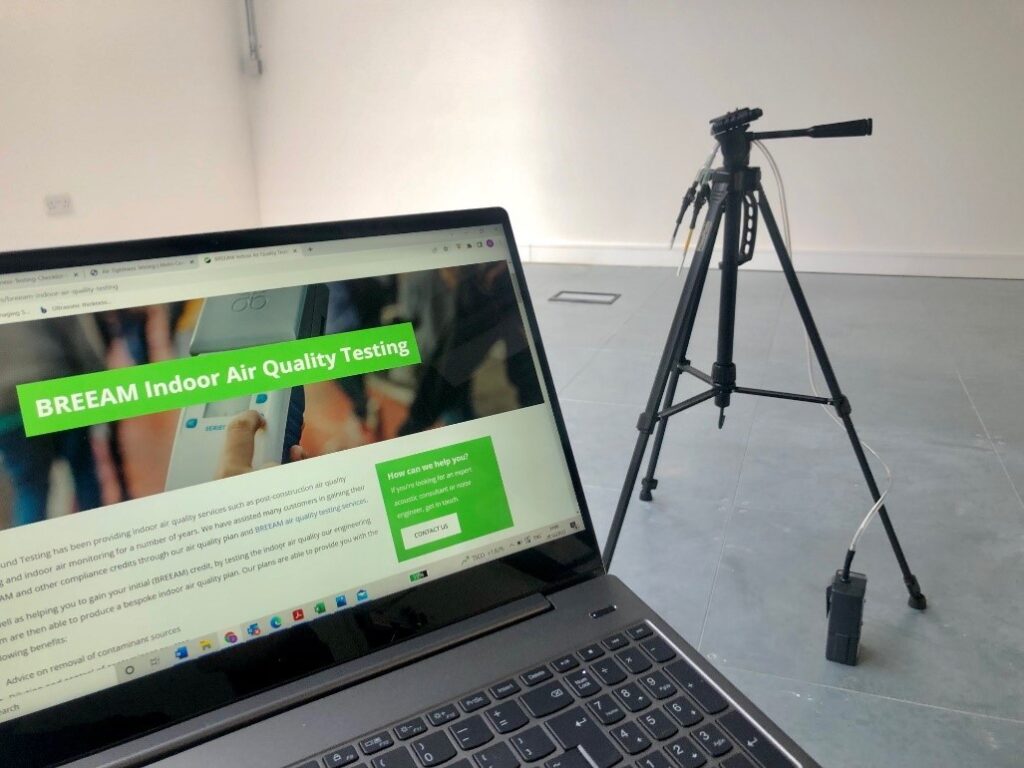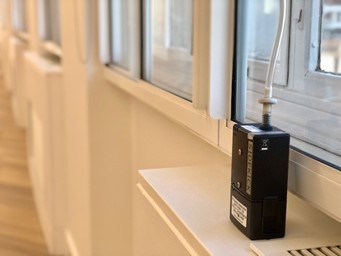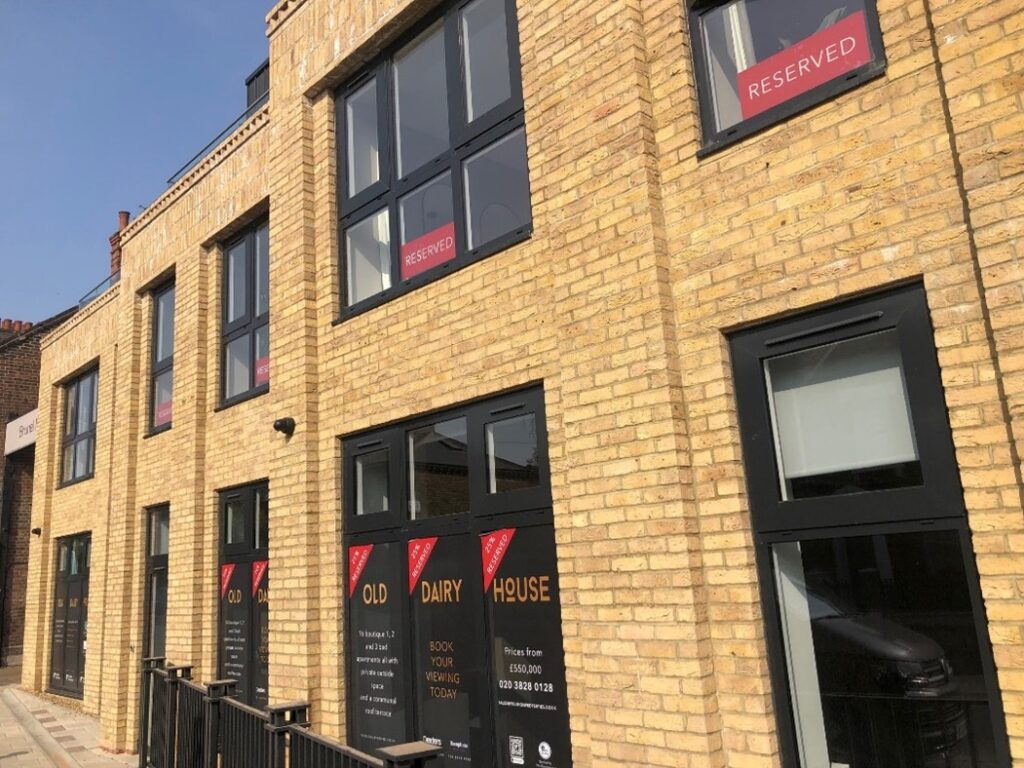
BREEAM Indoor Air Quality Testing
What is third party BREEAM Indoor Air Quality Testing
Its common knowledge that poor air quality within the indoor environment can result in occupants experiencing a number of symptoms ranging from fatigue to shortness of breath. Factors such as poor ventilation and air pollutants can be the main cause of what is commonly known as Sick Building Syndrome.
Achieving good Indoor Air Quality (IAQ) is a major component of indoor environmental quality, which is a function of BREEAM for occupant wellbeing. Quantifying indoor air quality through measurement and analysis informs building owners, operators, and occupants, of ventilation system effectiveness and the safety of the environment we live, work, and socialise in.
APT provides high quality Indoor air quality testing to meet the requirements of schemes such as BREEAM, Leed and Well to identify, mitigate and implement IAQ strategies.
We can undertake accredited indoor air quality testing for the following:
- Sample Testing for formaldehyde (CH2O) to BS EN 16000-3
- Sample Testing for total volatile organic compounds (TVOC) to BS EN 16000-6.
The indoor air quality sampling identifies the presence of volatile organic compounds TVOCs and formaldehyde. Where the levels of these compounds are found to exceed the prescribed limits, to claim the extra BREEAM credit for air quality it must be identified that appropriate measures have or will be undertaken in accordance with the IAQP to reduce the levels to fall within the limits.

When do I undertake BREEAM Indoor Air Quality Testing?
Your project must be nearing completion before an BREEAM Indoor Air Quality Test can be carried out. The sampling identifies the presence of volatile organic compounds TVOCs and formaldehyde. Where the levels of these compounds are found to exceed the prescribed limits, to claim the BREEAM credit it must be identified that appropriate measures have or will be undertaken in accordance with the IAQP to reduce the levels to fall within the limits.
What rooms/areas do I need to test during the IAQT
Indoor air quality samples should be performed only in rooms that are expected to be occupied for long periods of time such as bedrooms, living rooms, classrooms, offices, etc. A representative number of these rooms should be sampled. In larger rooms, such as open-plan office areas, additional sampling locations may be required.
What are the main chemical compounds you will be testing for?
When testing for the BREEAM standard the main compounds we will be testing for are Formaldehyde and Volatile Organic Compounds (VOC’s). Formaldehyde is a commonly used chemical compound is a colourless, distinctive, strong and pungent smelling substance, it is also flammable. Formaldehyde is often used within industries for various purposes such as the manufacturing of building materials.
Volatile Organic Compounds (VOCs) are gases that are given off by many indoor sources. Concentrations of most volatile organic compounds include a variety of chemicals that can cause eye, nose and throat irritation, shortness of breath, headaches, fatigue, nausea, dizziness and skin problems and are higher in indoor than outdoor.

What Indoor Air Quality Levels do I need to achieve for BREEAM
To meet the BREEAM requirements the formaldehyde concentration the indoor air at post-construction should not exceed 0.1mg/m3, averaged over 30 minutes. The total volatile organic compound (TVOC) concentration in indoor at post-construction should not exceed 0.3mg/m3, averaged over 8 hours.
How do I prepare my Building for the Indoor Air Quality Testing?
With every fee proposal we also attach our air quality checklist to help our customers prepare for the testing. Here is a quick summary of what action you need to undertake to prepare your building for the testing:
Restrict construction: if possible, at least 24 hours before air quality evaluation only minimal construction efforts should be taking place and no new volatiles should be introduced such as decorative finishes including water-based coatings, silicon seals, adhesives and others sealants.
Building flush out: flush out the inside air of the building with as much outside air as possible. This step can be accomplished by simply opening natural ventilation windows and/or running the HVAC systems. The building should be ventilated with 100% outside air. The building should be thoroughly ventilated for 24-48 hours prior to our attendance.
Finishes: All interior finishes should be installed, including but not limited carpeting, doors, paint, files. Movable furnishings such workstations and partitions are not required but should be in place at the time of the test.
Restrict cleaning: All activities likely to introduce volatiles into the indoor environment should be restricted. This applies to cleaning, the use of air fresheners, window, surface or other cleaners, polishes, waxes and other surface treatments.

What happens if we fail the BREEAM Indoor Quality Testing?
If we undertake the indoor quality testing and the building fails as the compounds are found to exceed the prescribed limits, to claim the BREEAM credit for air quality it must be identified that appropriate measures have or will be undertaken in accordance with the Indoor Air Quality Plan. Also, within our indoor quality test report we will make recommendations to reduce the levels to fall within the limits.
It’s worth noting that some compounds such as Formaldehyde, can persist in furniture for up to 6 months. VOCs can accumulate in buildings from a variety of sources, there are many cases where new build occupancy starts whilst VOCs are still high.
Will I receive a BREEAM compliant indoor air quality test report?
Yes, of course. After the indoor air quality test, we will send you a fully complaint BREEAM indoor air quality test report. The report will highlight which gases are present within your building, and where they are likely to have come from. Where we can, we will tell you what you can do to improve the air quality.
We can provide your BREEAM Indoor Air Quality Testing requirements
Here at APT we have significant experience in carrying out post-construction Indoor Air Quality (IAQ) testing across London and the Southeast. We are familiar with the stringent methods that are specified under BREEAM Hea02.
Our expert team will also provide free advice and guidance to your project manager to help to create the correct environment for the air quality tests, which is essential if you want to pass at the first attempt.
Call us on 01525 303905 or email us on info@aptsoundtesting.co.uk about our Indoor Air Quality Testing services. We are here to help! Alternatively, please visit our contact page here.